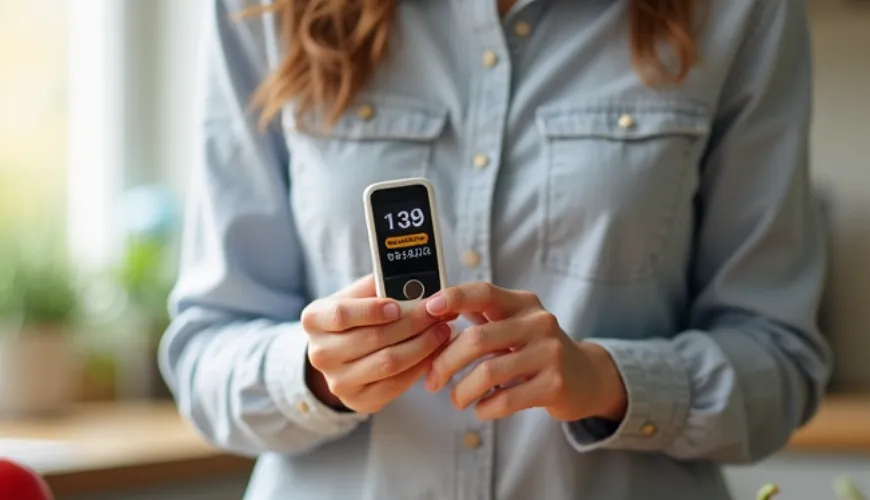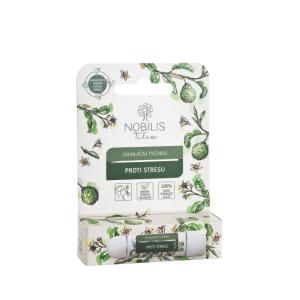
Find out what hyperglycemic shock looks like and what causes it.

What is Hyperglycemic Shock and How to Recognize it Early
Nowadays, as more people are dealing with diabetes, whether diagnosed or still hidden, it is important to be aware of the less known but serious complications associated with this disease. One of them is hyperglycemic shock, a condition where blood sugar levels spike to extremely high values, and the body stops functioning properly. This is a potentially life-threatening situation that requires immediate intervention. Yet, few people are aware of it.
Hyperglycemia generally means elevated glucose levels in the blood – the opposite of hypoglycemia, where there is too little sugar. However, if blood sugar levels exceed certain values and the body is unable to manage this situation, it can lead to a metabolic breakdown known as hyperglycemic shock. This condition most commonly affects people with type 1 and type 2 diabetes – especially if they forget to administer insulin, incorrectly dose medications, or if their body faces a challenging infection or stress.
Try our natural products
How to Recognize the Symptoms of Hyperglycemic Shock Early
The initial symptoms can easily be mistaken for common fatigue or exhaustion, making hyperglycemia particularly dangerous. The most common symptoms of hyperglycemic shock include:
- intense thirst and dry mouth,
- frequent urination, sometimes at night,
- headache and blurred vision,
- rapid heartbeat and deep breathing (known as Kussmaul breathing),
- fatigue, drowsiness, confusion,
- loss of consciousness.
The longer the glucose level remains extremely high, the worse the state of the body. The body's cells do not receive the necessary energy, the body switches to emergency mode, and begins breaking down fats, leading to increased acidity in the blood – a condition known as diabetic ketoacidosis. This process can result in a shock state, during which basic life functions cease to operate. For instance, a young diabetic woman who forgot to administer insulin during a feverish illness developed severe ketoacidosis within a short period. After several hours of nausea and vomiting, she lost consciousness and was taken to the hospital's intensive care unit. Fortunately, timely treatment saved her life.
What Glucose Levels Are Dangerous?
Normal blood sugar levels are approximately between 4 and 6 mmol/l when fasting, and may be slightly higher after eating. However, if blood glucose reaches values above 13.9 mmol/l, it is considered significant hyperglycemia. The most commonly considered critical levels are those higher than 16-17 mmol/l, with levels exceeding 33 mmol/l potentially leading to hyperglycemic shock.
It's important to realize that everyone may react differently. Some diabetics may withstand high sugar levels for longer periods without major difficulties, while others may rapidly experience a breakdown – especially in combination with dehydration or infection. Therefore, regular blood sugar monitoring and understanding one's own body are crucial.
What to Do in Case of Hyperglycemic Shock?
When you encounter someone who may be suffering from hyperglycemic shock, it is crucial to stay calm and quickly recognize that it is a serious condition requiring immediate action. Typical symptoms, such as vomiting, confusion, labored breathing, or even loss of consciousness, indicate that there is no time to waste – immediately call an ambulance at number 155.
Until help arrives, ensure the safety of the affected individual. If they are not breathing properly or are unconscious but still breathing, place them in a recovery position to prevent choking. Monitor their breathing and heart rate. Most importantly, avoid giving food or drink – especially if the person is unconscious or seems incoherent.
If the diabetic has insulin and is still oriented, they can self-administer it – but only if they know what they are doing and are truly conscious. In situations where every minute counts, a quick and correct response can save a life.
It is essential not to confuse hyperglycemia with hypoglycemia. In case of low blood sugar, the help is different – sugar or a sweet drink is given. In hyperglycemia, this could worsen the situation. Therefore, it is always best if a person with diabetes carries a card or bracelet with medical information so bystanders know what they are dealing with.
Prevention is Key – and It Starts with Lifestyle
Although hyperglycemic shock may seem like an extreme situation, some people with diabetes experience it multiple times in their lives. Yet, proper prevention and daily health care can significantly reduce the risk of reaching such a state. This includes not only regular blood sugar monitoring and adhering to a treatment regimen but also a conscious approach to food, exercise, and mental well-being.
Nutritionists and doctors agree that a plant-based and balanced diet with a low glycemic index can help stabilize blood sugar levels. This includes whole-grain products, legumes, vegetables, nuts, and seeds. Additionally, caution is needed with simple sugars, sweets, and sugary drinks, which can cause sudden spikes in glucose levels. Good helpers are organic foods without unnecessary additives, which can be found in stores focused on a healthy lifestyle.
Besides diet, regular exercise is significant – whether it be brisk walking, swimming, or cycling. Physical activity helps the body better utilize insulin and lower blood sugar levels. It also has a positive effect on mental health, which often has a greater impact on diabetes than we admit.
Diabetes and Modern Technology
Thanks to advances in medicine and technology, diabetes care today is not the same as it was ten years ago. Many patients use continuous glucose monitors (CGM), which track blood sugar levels in real-time and alert users to dangerously high or low values. These devices can be linked with a mobile phone and an app that records glucose trends throughout the day.
Another option is insulin pumps, which automatically administer insulin as needed. The combination of a pump and CGM creates a so-called hybrid artificial pancreas, significantly reducing the risk of acute complications, such as hyperglycemic shock.
However, technology is not a panacea – without active participation from the patient and their surroundings, it loses its purpose. Education, sharing experiences, and open dialogue are important. As the well-known Czech diabetologist Dr. Kateřina Šťastná says: “The best treatment is prevention – and it starts with everyday decisions on how we approach the disease."
While hyperglycemic shock is serious, it is not inevitable. Although it is a complication not to be underestimated, with sufficient knowledge, support from loved ones, and a responsible lifestyle, its risk can be significantly reduced. Knowing what to do in an emergency can be life-saving – and that's why it's important to talk about these topics.


